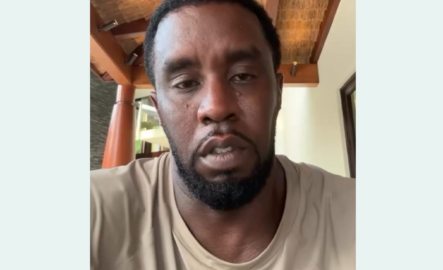It was 11:38 a.m. EST, on January 28, 1986, when the space shuttle Challenger lifted off from Cape Canaveral, Florida, to the excitement of millions of viewers. And then the worse happened. Just 73 seconds after takeoff, the space shuttle Challenger exploded, killing the seven crew members, including pioneering African-American astronaut Ronald McNair.
A booster engine failed after the launch from Cape Canaveral, cutting short the life of African-American physicist McNair, who was the second African American to reach space. McNair had overcome the racism of the Jim Crow South to excel in science and his field of work. Becoming the second African American to go to space was no easy feat considering many African Americans were being marginalized during that period by a system that denied them opportunities to succeed.
But McNair did not allow such restrictions to get in his way, right from childhood. Born October 21, 1950, in Lake City, South Carolina to a father, who was an auto mechanic and a school teacher mother, McNair had an appetite for knowledge that by age three, he had already started reading.
Even when African Americans had been banned from borrowing books from the local library, a nine-year-old McNair walked to the counter of the building, asking for books on advanced science and calculus — books he couldn’t find from sources available to African Americans.
“When he was 9 years old, Ron, without my parents or myself knowing his whereabouts, decided to take a mile walk from our home down to the library,” McNair’s brother Carl recalled in an interview with NPR in 2011.
“So, as he was walking in there, all these folks were staring at him — because they were white folk only — and they were looking at him and saying, you know, ‘Who is this Negro?’”
The librarian refused to release the books to him, but a young McNair wouldn’t leave. The librarian had to call the police and his mother, but eventually, McNair was allowed to borrow the books. With an interest in science, the South Carolina native grew up attending North Carolina A&T University as white colleges in South Carolina wouldn’t accept Black students who wanted to study physics or engineering at that time.
The HBCU graduate then went on to the Massachusetts Institute of Technology and graduated in 1976. Two years later, NASA selected him as one of its 35 new astronauts from 8,000 applicants. He, alongside Frederick Gregory and Guion Bluford, became the first African Americans selected as astronauts, with Bluford later becoming the first African American to travel in space in 1983.
Three years after Bluford’s feat, McNair was on the famed Challenger mission when the disaster occurred. He and the rest of the crew never made it as the Challenger broke up seconds after launch in full view of television cameras. “Flight controllers here are looking very carefully at the situation. Obviously a major malfunction,” the NASA launch commentator said at the time, as pieces of the shuttle fell from the sky.

A special commission was appointed to find out what went wrong that cold morning. “The investigation determined that the disaster was caused by the failure of an “O-ring” seal in one of the two solid-fuel rockets. The elastic O-ring did not respond as expected because of the cold temperature at launch time, which began a chain of events that resulted in the massive loss,” according to History.
NASA did not send astronauts into space for over two years as it redesigned some features of the space shuttle.
McNair, who was also an accomplished saxophonist, had worked with the composer Jean-Michel Jarre on a piece of music before his demise. The little time he got, he shared his story in churches and schools and was even going to teach after the Challenger mission when the tragedy occurred.
In 2004, he was posthumously awarded the Congressional Space Medal of Honor along with all crew members lost in the disaster. There are countless programs, people and public places that have been renamed in his honor as well, including a hall in The Challenger Learning Center established as a living memorial to the Challenger crew.
Students at The Learning Center are allowed to simulate space missions, and during tours at McNair’s hall, his story is always told.
“We like to use that when we are talking to students,” said Thelma Clayvon, the center’s director. “A lot of times students will say, ‘Well I’m from a poor area.’ Ron grew up poor, and we like to tell them that he worked very hard.
“When they come in, they know they have the option to try without being penalized. They know that they will be encouraged.”
Rep. Jim Clyburn, who has strongly supported the center, said McNair “continues to teach us all to use our talents for the benefits of others. He gave the ultimate sacrifice, but left us with a legacy that will endure for generations to come.”









